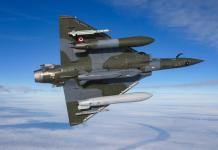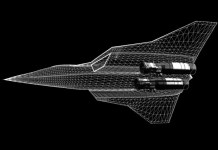On August 16, dramatic visuals surfaced depicting a major blaze on the former Soviet Kiev-class aircraft carrier Minsk. The ship, which had been resting in a man-made lagoon near the Yangtze River in China for years, was seen burning.
The footage of the blaze, which began during the refurbishment process, quickly spread across the internet, capturing widespread attention.
According to a local Chinese media outlet, the fire broke out at approximately 4:00 PM on August 16 while the old aircraft carrier was being dismantled and renovated at the Su-Xi-Tong Science and Technology Park.
The Su-Xi-Tong Fire Rescue Brigade confirmed that the fire, emergency, and public security departments were managing the situation.
There have been no reported casualties as of now. Authorities are actively investigating the cause of the fire, but it remains unclear what sparked the flames.
The Chinese lost their aircraft carrier Minsk. pic.twitter.com/d9P8jNAzUl
— Lowsen (@oxminer_lowsen) August 16, 2024
A drone video that emerged on August 17 reveals that although the fire’s intensity has lessened, considerable damage has been done to the ship’s superstructure. The footage provides a clearer view of the destruction, highlighting the scale of the incident.
The fire, though tragic, is not entirely surprising to experts. A Chinese company acquired the aircraft carrier, which was ultimately abandoned to deteriorate in the lagoon, a situation that many viewed as a disaster waiting to occur.
The vessel’s poor condition and the dangerous circumstances resulting from prolonged neglect were the most likely crucial factors that started the blaze.
The incident has sparked a range of reactions on social media. Many users have taken to platforms like X to share their thoughts, often with a touch of humor.

One user quipped, “You can take the aircraft carrier out of Russia (and turn it into a casino), but you can’t take the Russian out of the aircraft carrier (preternatural habit of lighting on fire).”
Another user jokingly referenced Ukraine’s recent naval successes by saying, “Ukraine, you mad lads, lmao,” alluding to the ongoing conflict in which Ukraine has targeted and destroyed several Russian naval vessels.

The Tumultuous Journey Of The Minsk: From Soviet Powerhouse To Decaying Relic
The Soviet-era Minsk, a Kiev-class “heavy aviation cruiser,” has experienced a storied and tumultuous post-service existence, evolving from a Cold War-era naval asset to a decaying relic of history.
Constructed in 1978 as a rival to the US Navy’s aircraft carriers, the Minsk was named after the Belarusian capital. It symbolized Soviet naval prowess during a period of intense geopolitical rivalry.
Distinct from conventional aircraft carriers, the Kiev-class ships were classified as “heavy aviation cruisers,” combining the roles of an aircraft carrier with those of a cruiser. This unique design set them apart from the carriers of the US and its NATO allies.
The Kiev, the class leader, was launched in 1975, followed by the Minsk in 1978, the Novorossiysk in 1982, and the Baku in 1987. These ships were built at the Mykolaiv Shipyard in Ukraine, the USSR’s only manufacturer of large surface warships.
The Kiev-class carriers were formidable vessels, armed with eight SS-N-12 “Sandbox” anti-ship missiles capable of delivering either a 2,000-pound high-explosive or a 250-kiloton nuclear warhead.

Additionally, the Minsk, Kiev, and Novorossiysk were outfitted with two twin-rail SA-N-3 surface-to-air missile launchers, which provided substantial defensive capabilities against aerial threats.
Following the collapse of the Soviet Union, the Russian Navy inherited the Kiev-class carriers but faced significant operational and maintenance challenges. The Minsk’s sister ship, Novorossiysk, suffered a major engine room fire in 1993, highlighting the difficulties of sustaining these aging warships.
In the mid-1990s, the fate of the Kiev-class carriers took a dramatic turn. The Minsk and Novorossiysk were sold for scrapping, initially heading to South Korea.
Meanwhile, the Baku was sold to India in 2004 and, after extensive refits and modifications, entered service with the Indian Navy as the INS Vikramaditya in 2013.

Novorossiysk was ultimately dismantled in South Korea, but protests led to a Chinese company purchasing Minsk instead. A group of Chinese entrepreneurs intervened, saving Minsk from being scrapped and repurposing it as the centerpiece of Minsk World, a theme park that opened in 2000.
The park showcased a combination of decommissioned Soviet and Chinese aircraft arranged on the carrier’s deck. Unfortunately, Minsk World faced financial difficulties and went bankrupt in 2006, leading to the Chinese government reclaiming the park’s land.
In the late 2010s, the deteriorating Minsk was relocated approximately 50 miles northwest of Shanghai. Despite initial plans to revive the theme park concept, these ambitions faltered, and the ship fell into further disrepair.
It became a popular site for urban explorers who ventured aboard the increasingly neglected vessel, drawn by its historical significance and the allure of its faded grandeur.
Recent developments offered a glimmer of hope for Minsk’s future. In January, officials in the nearby city of Nantong announced plans to rehabilitate the ship and transform it into a “national defense science education center.” The initiative was aimed to preserve the vessel’s historical value while repurposing it for educational purposes.
On a related note, another Kiev-class carrier, the former Kiev itself, resides in China at the Binhai Aircraft Park in Tianjin. This ship, in better condition than the Minsk, has been maintained as a tourist attraction.
In 2011, plans were announced to convert it into a floating luxury hotel, reflecting the continued interest in repurposing these historical vessels for modern uses.
Nonetheless, the latest incident, which has destroyed the aircraft carrier Minsk’s iconic features, may signal the end of the vessel’s storied journey.
- Contact the author at ashishmichel(at)gmail.com
- Follow EurAsian Times on Google News




